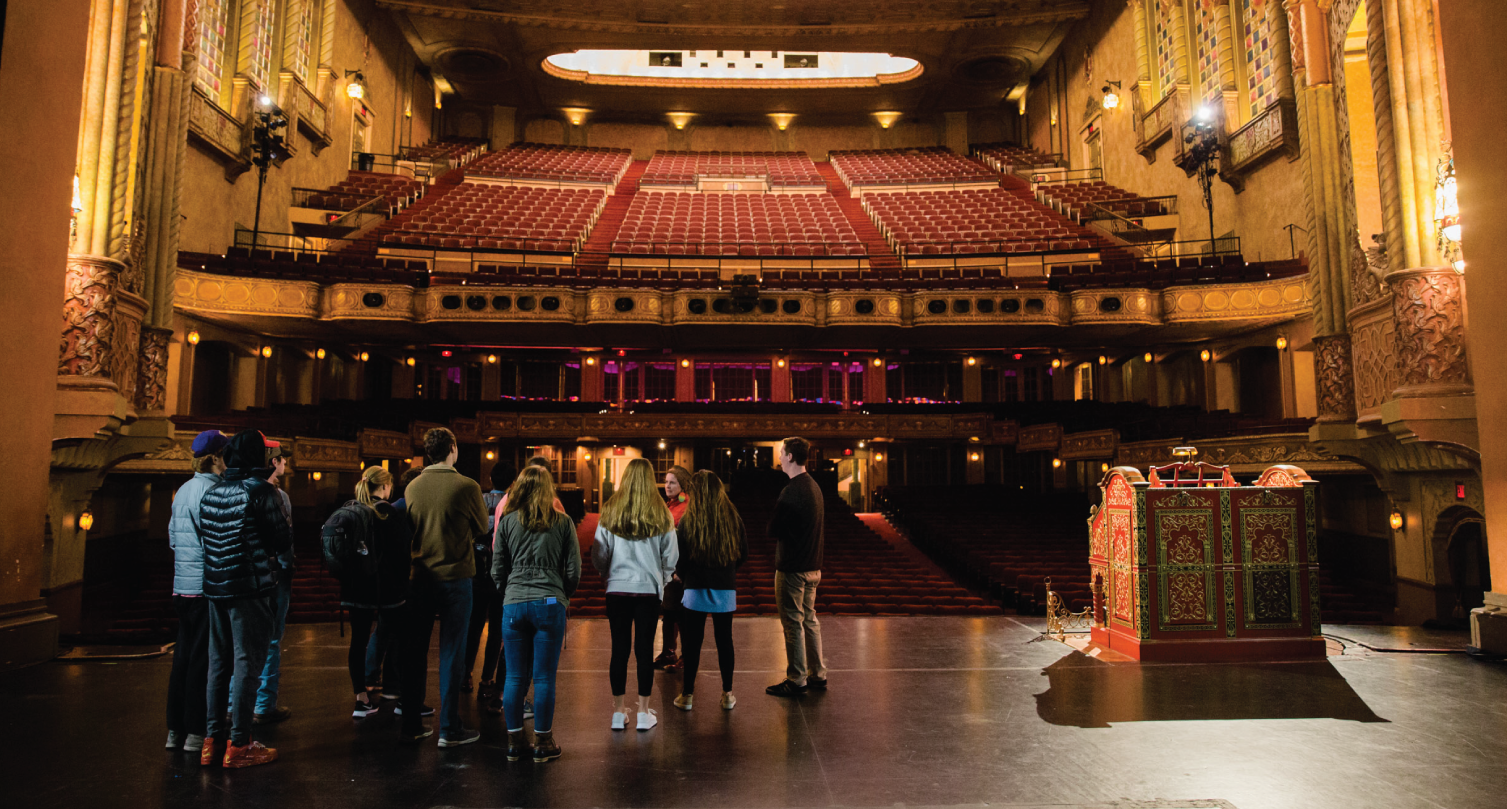
Exploring the city
Exploring the city
In this E-Term class, students stroll city streets and wild trails to explore Birmingham’s past
Most courses held during E-Term, BSC’s unique January term, have some kind of experiential angle. Students in one course really pounded the pavement in their attempt to understand local history.
“Walking Birmingham: History and Habitat,” included wild spaces like Oak Mountain Park and the Cahaba River Wildlife Refuge, and also downtown landmarks like the Lyric Theatre and Civil Rights Trail.
“I really wanted to do something that would get the students out of doors but also out to see the city,” said Associate Professor of Economics Dr. Kathleen Greer Rossmann, who led the class. For each location, she assigned a team of two students to research the area, write a five-page paper about it, and lead a tour; they also kept a journal of their experiences. In between leading tours, students also took on responsibility for carrying supplies for the group – including ponchos, water, and first aid – and even providing snacks and jokes.
The theme of the course was the intersection of Birmingham’s iron industry and race relations in the city and state, Rossmann said. To that end, the class dug into history at places like Tannehill State Park and Red Mountain Park, where old mine shafts, a foundry, and other relics of the ore industry are easy to find. They examined the city’s role in the national fight for civil rights, but also looked in unexpected places – like local cemeteries – to understand the differences between black and white lives, even in death. And they looked at how the area’s geology impacts its unusual ecosystems, as well.
They got a few special tours, including a look at Joe
In some cases, Rossman said, the challenges were as physical as they were academic – especially when attempting some of the more intensive trail walks.
“Getting 16 people of different abilities to hike together – deciding how often to stop and making sure no one is left behind – isn’t easy,” Rossman said. “It’s a very different group dynamic than in the classroom, and the students impressed me with how

